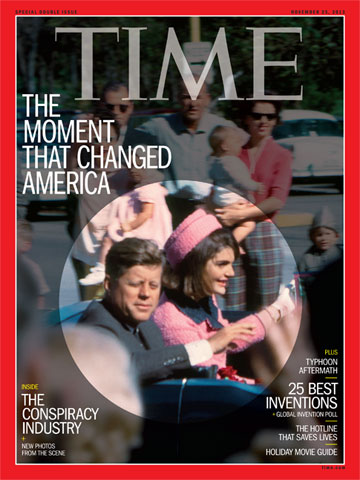
(4 of 8)
At Parkland Memorial Hospital, doctors found the President still breathing reflexively and rushed to open a passage in his windpipe that obscured the bullet wound in his throat. When a spent bullet was found on a gurney, a Secret Service man dropped it into his pocket without marking it as evidence. Other agents began cleaning the limousine outside before realizing that they were tampering with a crime scene. At 1 p.m., the President was pronounced dead, and the Secret Service was so determined to get the body and the survivors back to Washington that they ran roughshod over Texas officials who said state law required an autopsy in Dallas.
The agents hustled the casket and the widow back to Love Field and the relative safety of Air Force One, where they found Johnson, the new President-in-waiting, already inside the sweltering cabin with the shades drawn in case of another attack. No one knew whether the assassination was just one step in a larger plan. The agents desperately wanted to get the plane safely into the air. But Johnson--who had been riding a couple of cars behind Kennedy in the motorcade--was adamant that he must take the oath of office before leaving, so they waited until Johnson's friend U.S. District Judge Sarah Hughes could reach the plane and administer the ceremony. Johnson carefully positioned Jacqueline Kennedy, in her bloodstained suit, directly beside him for the photograph.
And while this was happening, Dallas police were closing in on Oswald, a strange young man of 24 who had been drummed out of the Marines and defected to the Soviet Union in a little burst of fame, only to return to the U.S. some 30 months later in 1962. Arrested after a struggle inside a movie theater, accused of having killed Dallas police officer J.D. Tippit while fleeing from Dealey Plaza, he insisted he had not killed the President. "I didn't shoot anybody," he told police. "You are trying to railroad me." He was "a patsy," he declared. Exactly what he meant by this was never revealed, because instead of facing trial, Oswald was shot to death on Nov. 24 while being transported from one jail cell to another. The killer was a strip-club owner named Jack Ruby.
As for the late President, when Air Force One arrived in the capital, his body was taken to Bethesda Naval Hospital in Maryland. "Jack was a Navy man," his widow said simply, not realizing, perhaps, that nearby Walter Reed Army Medical Center was one of the foremost institutions of forensic science in the world. The resulting autopsy and documentation were woefully inadequate.
STUCK IN THE MOMENT
